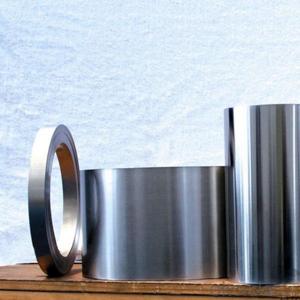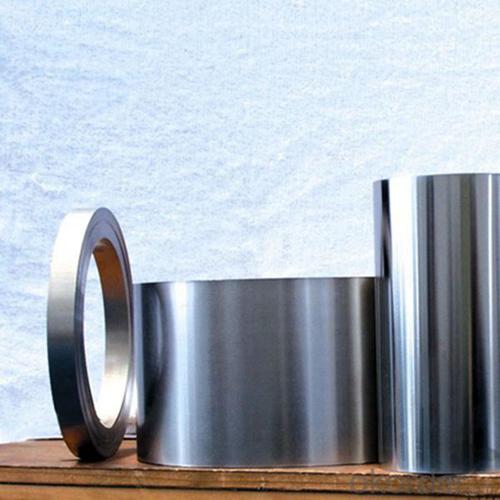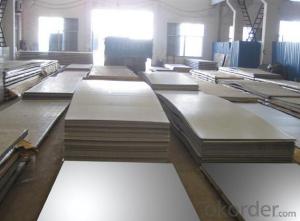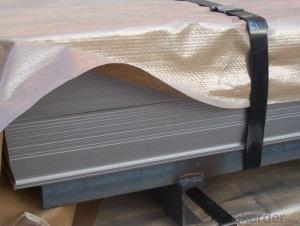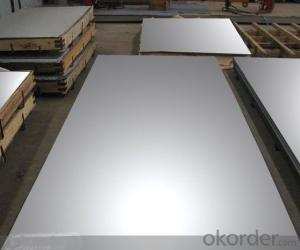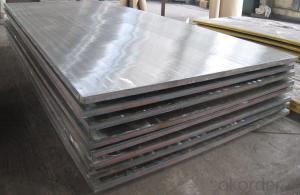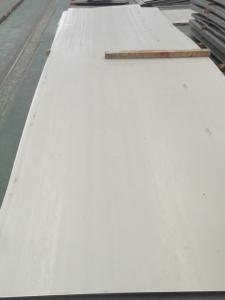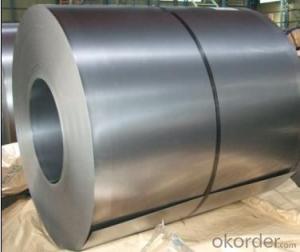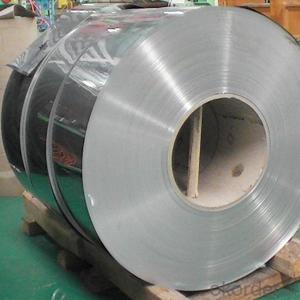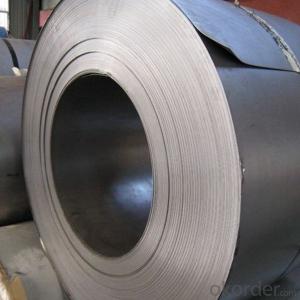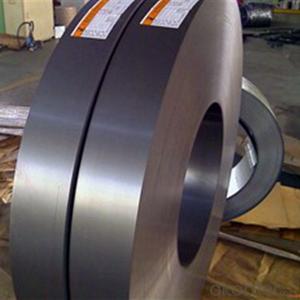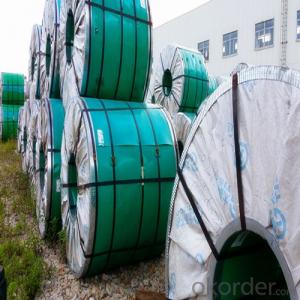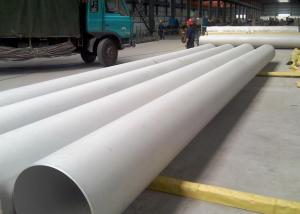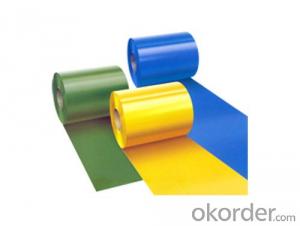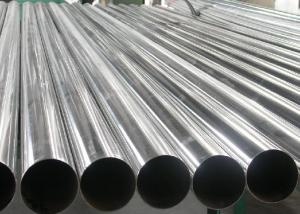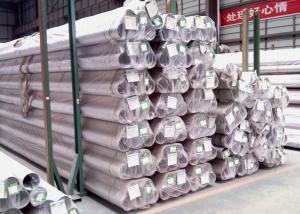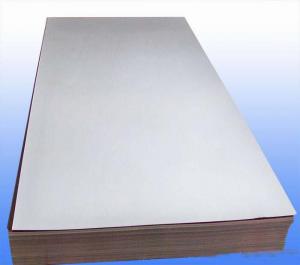Hot Rolled Steel Coils 316 Grade Hot Rolled Stainless Steel Coils
- Loading Port:
- Tianjin
- Payment Terms:
- TT OR LC
- Min Order Qty:
- 25 m.t.
- Supply Capability:
- 20000 m.t./month
OKorder Service Pledge
OKorder Financial Service
You Might Also Like
Specification
Products Description for Stainless Steel Coils/Sheets:
Material | Stainless Steel | |
Standard | AISI, ASTM, JIS,GB,EN,DIN | |
Grade | 304 | |
Technology | Cold Rolled and Hot rolled | |
Form | plate | |
Thickness | 0.3 mm – 8.0mm | |
Width | 1000mm,1219mm,1250mm,1500mm,1524mm,2000mm | |
The sizes or thickness of stainless steel coil can be customized, if you need additional information, please don't hesitate to contact us at anytime. | ||
Packaging & Delivery for Stainless Steel Coils/Sheets:
Packaging Detail Standard export packing or following customer's demand
Delivery Time: Within 30-40 days after deposit or according to the order quantity
Detail picture for Stainless Steel Coils/Sheets

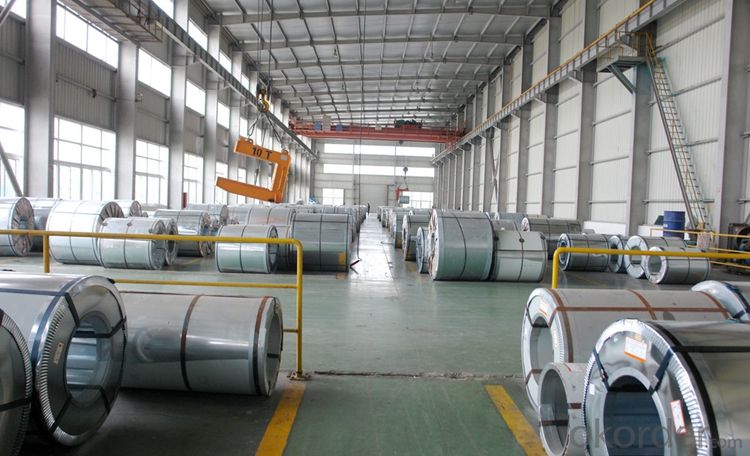
Application for Stainless Steel Coils/Sheets:
Boiler heat exchanger, machinery andpetroleum ,chemical industries, hardware fields,Food industry,construction material,kitchen utensils, building construction, medical equipment,chemical tank, pipe etc
Specifications for Stainless Steel Coils/Sheets:
Grade | C ≤ | Si ≤ | Mn ≤ | P ≤ | S ≤ | Ni ≤ | Cr ≤ |
201 | 0.12 | 0.75 | 7.00 | 0.045 | 0.045 | 1.00-1.28 | 13.70-15.70 |
202 | 0.15 | 1.00 | 2.25 | 0.045 | 0.045 | 4.07-4.17 | 14.00-16.00 |
304 | 0.08 | 0.75 | 2.00 | 0.045 | 0.03 | 8.00-11.00 | 18.00-20.00 |
304L | 0.035 | 0.75 | 2.00 | 0.045 | 0.03 | 8.00-13.00 | 18.00-20.00 |
309 | 0.15 | 0.75 | 2.00 | 0.045 | 0.03 | 12.00-15.00 | 22.00-24.00 |
310S | 0.08 | 1.50 | 2.00 | 0.045 | 0.03 | 19.00-22.00 | 24.00-26.00 |
316 | 0.08 | 1.00 | 2.00 | 0.045 | 0.03 | 10.00-14.00 | 16.00-18.00 |
316L | 0.035 | 0.75 | 2.00 | 0.045 | 0.03 | 10.00-15.00 | 16.00-18.00 |
321 | 0.04-0.10 | 0.75 | 2.00 | 0.045 | 0.03 | 9.00-13.00 | 17.00-20.00 |
405 | 0.08 | 0.75 | 1.00 | 0.045 | 0.03 | 0.06 | 11.5-13.5 |
409 | 0.089 | 1.00 | 1.00 | 0.045 | 0.05 | 0.06 | 10.50-11.75 |
410 | 0.15 | 0.75 | 1.00 | 0.045 | 0.03 | 0.06 | 11.5-13.5 |
420 | 0.16-0.25 | 1.00 | 1.00 | 0.040 | 0.03 | 0.06 | 12.00-14.00 |
430 | 0.12 | 0.75 | 1.00 | 0.045 | 0.03 | 0.06 | 16.00-18.00 |
FAQ for Stainless Steel Coils/Sheets:
Q: How can I get the samples?
A: If you need some samples to test ,please pay for the transportation freight of samples and our samples are free for you.
Q: How can I get your price list?
A: Please send us your email or fax and order information – Quantity, Specification (steel type, thickness, width, surface finish), then I can send you the price list.
- Q: How do you remove rust from stainless steel sheets?
- To remove rust from stainless steel sheets, you can try using a mixture of baking soda and water to create a paste. Apply the paste to the affected area and gently scrub it with a non-abrasive cloth or sponge. Rinse thoroughly with water and dry the sheets completely. Additionally, you can use white vinegar or lemon juice by applying it directly to the rust spots and letting it sit for a few minutes before scrubbing and rinsing.
- Q: 304 how can the water stain on the surface of stainless steel plate be formed?
- This is mainly the unclean environment and surface protection measures are not done well, stainless steel plate surface water stains even if frosted, not necessarily can be worn off
- Q: What are the different types of etched finishes available for stainless steel sheets?
- There are several different types of etched finishes available for stainless steel sheets, including satin, hairline, mirror, bead blast, and patterned finishes.
- Q: What are the common sizes of stainless steel sheets?
- Common sizes of stainless steel sheets vary depending on the industry and application. However, there are some standard sizes that are readily available in the market. For instance, stainless steel sheets commonly come in thicknesses ranging from 0.4mm to 3.0mm. The most common widths are 1000mm, 1219mm, and 1500mm, while the most common lengths are 2000mm, 2438mm, and 3000mm. These dimensions are often referred to as 4x8 (4 feet by 8 feet), as they are the standard size for stainless steel sheets used in various construction and fabrication projects. It's worth noting that stainless steel sheets can also be custom-cut to specific dimensions based on the requirements of a particular project. This allows for greater flexibility and ensures that the sheets fit perfectly for the intended application.
- Q: Can stainless steel sheets be used for wastewater treatment?
- Yes, stainless steel sheets can be used for wastewater treatment. Stainless steel is highly resistant to corrosion and can withstand the harsh conditions and corrosive elements often found in wastewater treatment processes. Additionally, its smooth surface makes it easy to clean and maintain, ensuring long-term durability and effectiveness in treating wastewater.
- Q: How do you prevent staining on stainless steel sheets?
- To avoid staining stainless steel sheets, there are several actions you can take: 1. Regularly clean the sheets using mild soap or detergent and warm water. Harsh chemicals and abrasive cleaners should be avoided as they can harm the surface. 2. Keep the sheets away from corrosive substances such as bleach, ammonia, and acidic cleaners. If spills occur, quickly rinse the affected area with water and thoroughly dry it. 3. Apply a protective coating or film to create a barrier between the surface and potential staining agents. There are various products designed specifically for stainless steel that can be used, such as protective sprays or polishes. 4. Properly maintain the sheets by regularly inspecting for any damage, scratches, or rust. Address any issues promptly by cleaning or repairing the affected areas to prevent staining. 5. Use soft cloths or non-abrasive sponges when cleaning or maintaining the sheets to avoid scratching the surface. Avoid using steel wool or abrasive materials that can cause marks or damage. 6. Ensure the sheets are thoroughly dried after cleaning to prevent water spots or mineral deposits. Use a clean, lint-free cloth to remove any moisture. 7. Handle the sheets with care to prevent scratching or damaging the surface. Avoid dragging or sliding heavy objects across them, as this can leave marks or cause abrasions. By following these preventive measures, you can maintain the appearance and integrity of stainless steel sheets and minimize the risk of staining.
- Q: Can stainless steel sheets be used for solar panels?
- Yes, stainless steel sheets can be used for solar panels. Stainless steel is a durable and corrosion-resistant material that can protect the solar panels from environmental conditions. It is commonly used as a backing material or frame for solar panels due to its strength and longevity.
- Q: Are stainless steel sheets suitable for hygienic applications?
- Yes, stainless steel sheets are highly suitable for hygienic applications. Stainless steel is corrosion-resistant, non-porous, and easy to clean, making it ideal for environments that require strict hygiene standards, such as hospitals, food processing plants, and laboratories. Additionally, stainless steel has antimicrobial properties that inhibit the growth of bacteria, further enhancing its suitability for hygienic applications.
- Q: What is the fatigue strength of stainless steel sheets?
- The fatigue strength of stainless steel sheets can vary depending on various factors such as the grade of stainless steel, surface finish, thickness, and any surface treatments or coatings applied. It is typically higher than that of carbon steel, making stainless steel sheets more resistant to fatigue failure under cyclic loading. However, the exact fatigue strength value will vary and can be determined through testing and analysis specific to the particular stainless steel sheet being used.
- Q: Are stainless steel sheets available in different colors?
- Typically, stainless steel sheets are solely offered in their natural silver color, not in other hues. Stainless steel is a steel alloy with chromium, which imparts its distinctive silver look. Although it is feasible to apply different coatings or finishes to stainless steel sheets for alternative colors like black or gold, these choices are not commonly provided. Nevertheless, alternatives such as powder coating or painting can be explored to achieve different colors on stainless steel sheets, but these methods might impact the material's ability to resist corrosion and endure over time.
Send your message to us
Hot Rolled Steel Coils 316 Grade Hot Rolled Stainless Steel Coils
- Loading Port:
- Tianjin
- Payment Terms:
- TT OR LC
- Min Order Qty:
- 25 m.t.
- Supply Capability:
- 20000 m.t./month
OKorder Service Pledge
OKorder Financial Service
Similar products
Hot products
Hot Searches
Related keywords
